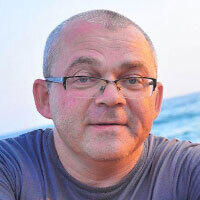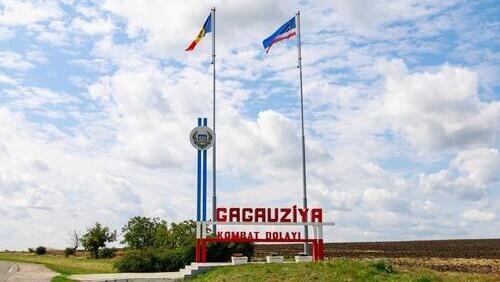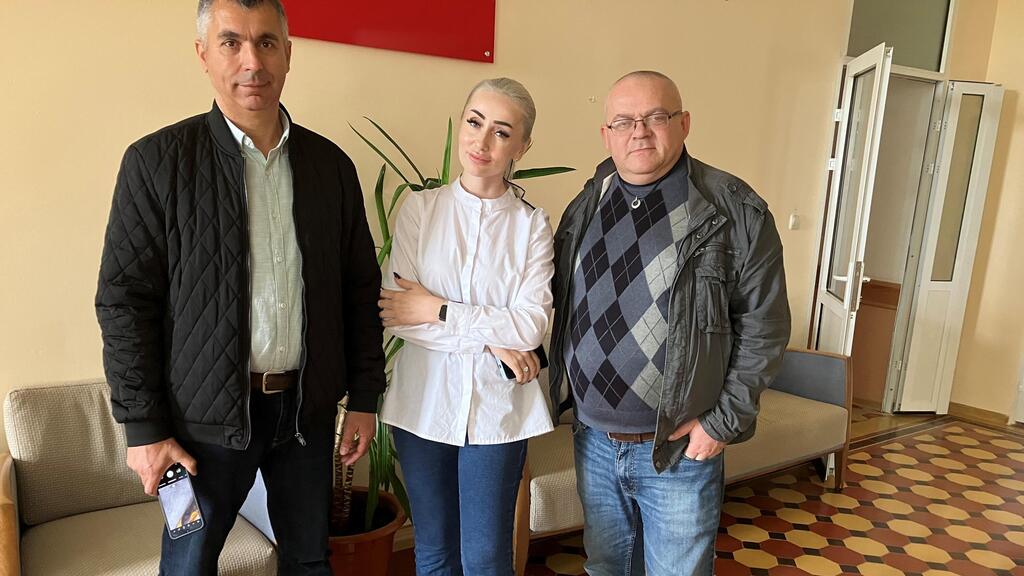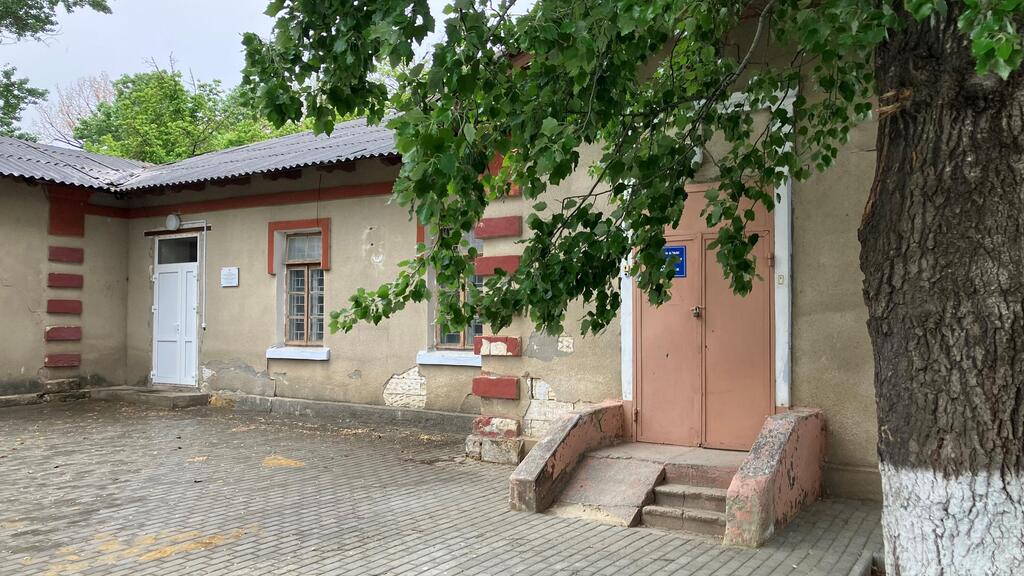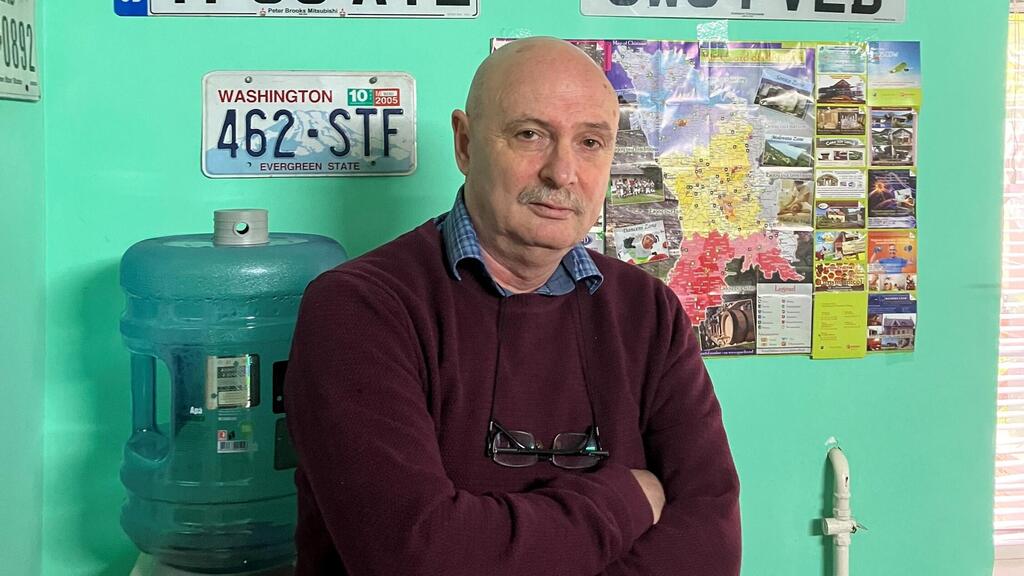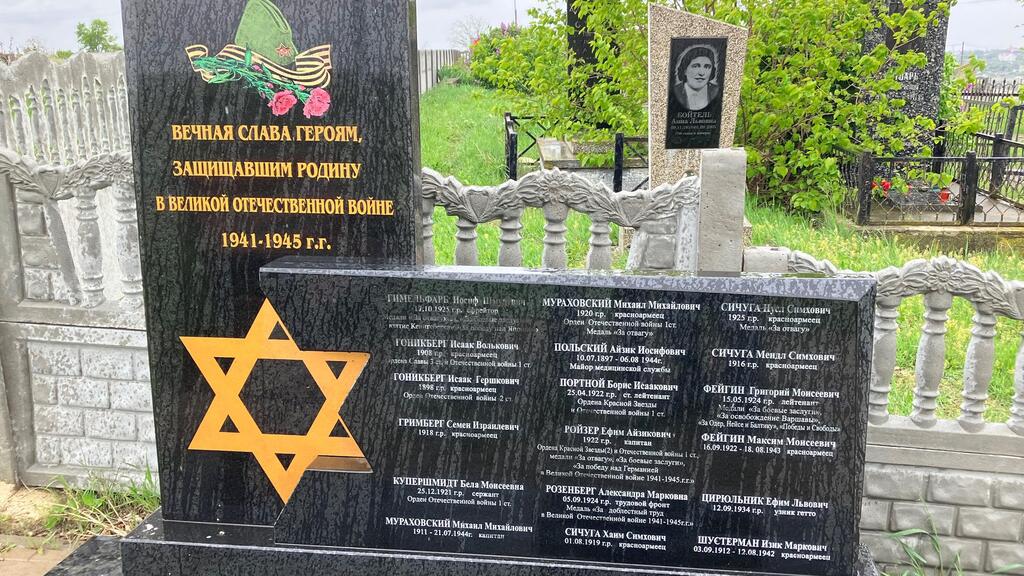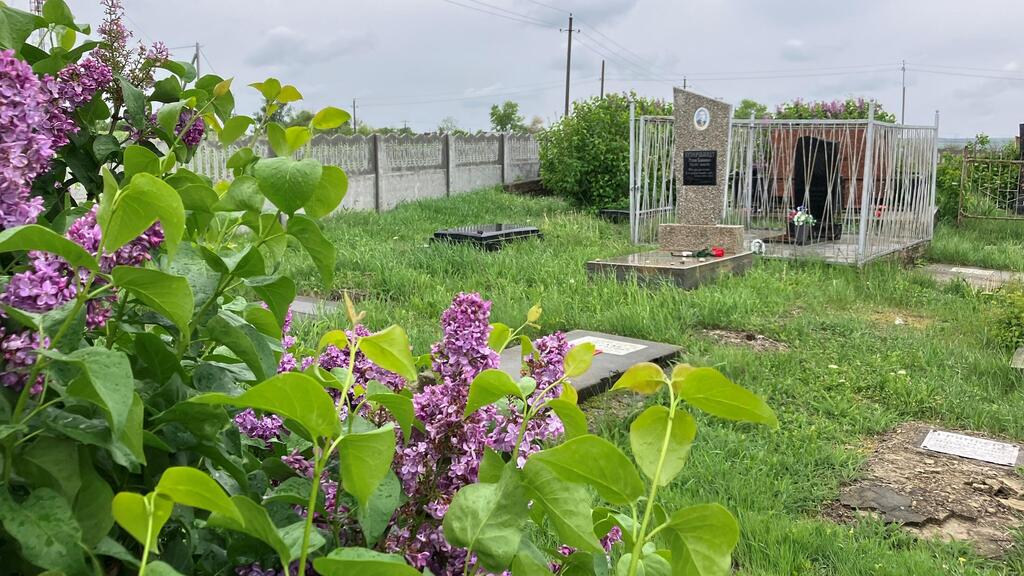Getting your Trinity Audio player ready...
Are you on a hunt for unusual tourist destinations you haven't been to yet? Do you crave the flavors and cuisines of the East, but do not want to visit Muslim countries, If so, you'll love Gagauzia! This is a stunning steppe region in the south of Moldova, where you'll find warm and talented people. Their rich history is closely tied to the Jews, as a famous couplet from long ago attests. Gagauzians are Orthodox Christians of Turkic origin. They keep their ancestors’ history very sacred and honor the memory of their fellow Jews.
The Gagauz national dishes include shurpa, dolma, gyozlemya (pies with cheese), kaurma (a festive dish of lamb), chorba (chicken soup with tomatoes and vinegar), sarma (stuffed grape leaves), turshu (pickles), and many other delicious treats. If you're looking to visit Gagauzia, you'll find it's easier to get there from Chisinau. From there, it's just a 2-hour and 40-minute flight from Tel Aviv, and then it's an hour and a half by road to Comrat. The only downside is that there's no sea in Gagauzia, but the region's main wealth is its people, who are so welcoming and friendly that they'll make your trip truly special.
Gagauzia is a special place, located in the sunny south of Moldova. It's officially known as the Autonomous Territorial Unit of Gagauzia. It was created on December 23, 1994, from the settlements where more than 50% of the inhabitants were Gagauz. It also included those where most inhabitants agreed to join the Gagauz autonomy according to the results of the referendum. The Gagauzians are the only people of Turkic origin who profess Orthodox Christianity. Gagauzians are such wonderful, hospitable people!
They've done a great job of preserving their identity and traditions. The annual Gagauz Spring festival, Hederlez, is a real highlight of the year. It's timed to coincide with the cattle drive to pastures, which is a beautiful sight to behold. It's a real celebration of the Gagauz people and their culture. It's a national event for Moldova, where the country's leadership, representatives of both Western and Eastern countries, as well as thousands of guests and tourists come together. The festival is held in the lovely town of Ceadir Lunga, where you'll find the only horse farm in Moldova dedicated to breeding Orlov trotters. We’ll be sure to fill you in on all the details!
And today, we're going to introduce you to our friends in Comrat, the Capital of Gagauzia. We'll also tell you a bit about the lovely people who live there, the Jewish addresses, and some other tourist spots.
Lenin, who is always with you!
There's a bust of Lenin at the gas station at the entrance to Comrat. The pedestal is quite unusual, as it's very squat, unlike what you'd expect. It doesn't elevate the sculpture of the world proletariat leader, which is utterly a contrast to what you might see elsewhere. So, everyone can get a photo with the surviving "grandfather," the legacy of the Soviet era, just in an embrace, as the Israelis say, "at eye level."
Although Comrat is the capital, it's a small town, like a small Ukrainian settlement. The city is home to about 20,000 people. At the bus station in Comrat, a sweet girl sells cold kvass from a barrel, just like in our childhood in the USSR. And even though the barrel is in the sun, the kvass in it is perfectly cold and thirst-quenching! Here I meet Valerii Cyssa, a tall 53-year-old deputy of the City Council, a native of Comrat, and a local historian. He has prepared a fascinating exclusive tour of the city for me.
Isaac Gurfinkel City Hospital
We enter a courtyard with a metal fence, and there, nestled inside, is a one-story building. It's an old house, built in 1906 by the Bessarabian zemstvo (district), Valery tells me. "Our hospital is named after Isaac Lazarevich Gurfinkel, who is considered the first zemstvo doctor in the district and the founder of this medical institution. Isaac Lazarevich was a true hero in his work. He saved countless lives from typhus and cholera epidemics, as well as thousands of residents from other diseases. The hospital is named after him, and soon, a memorial plaque with a bas-relief of Gurfinkel will be installed on it," the guide adds.
The charming Elena Rusu, the head of the chronic diseases department, welcomes us into the building and invites us to her office. She tells us that when she first started working here, she had the idea to designate the building as historical and protect it under the state. The girl is so excited to share her plans for the museum! She'd love to create the First Museum of Medicine of Gagauzia in the building and improve its facades and territories. I can see that she's got this! I have no doubt that she will succeed!
Furthermore, I remember the months-long queues to specialists in Israel and asking how many hospitalizations in this hospital will cost me as a foreigner without a residence permit and no insurance. When I heard the price was only 172 lei per day (that's 36 shekels!) including all the specialist exams, I couldn't help wondering how I'd like to stay in this hospital under such a wonderful doctor, keeping the glorious medical traditions of Isaac Gurfinkel.
A street in Jerusalem is named after a native of Comrat
Valery had prepared thoroughly for the tour, and the next point was an absolute surprise for me. We drove up to the building where the Israeli public figure and politician, associate of Ben Gurion, who was awarded the title of Honorary Citizen of Jerusalem, Reuven Shari (Shreibman), supposedly studied in the cheder. He was born on April 7, 1903, in Comrat, which was then part of the Bessarabian province of the Russian Empire. After getting a traditional Jewish education here, he graduated from the gymnasium in Chisinau. He then went on to study law in Iaşi, where he received a license to practice law. He was a member of the Zeirei Tzion movement.
Likewise, he made the big move to Mandatory Palestine in 1925. He became an active member of the Haganah during the unfortunate Arab pogroms of 1929. He was very active in the Labor movement and was a member of the Mapai Center, from which he was elected to the Knesset of the first and second convocations.
Reuven Shari was quite an accomplished guy! He held a number of responsible and high-ranking positions, including Deputy Minister of Transportation in the Ben-Gurion government. Reuven Shari was a true champion of Jerusalem, devoting many years and efforts to its development. For all his hard work and dedication, he was honored with the title of Honorary Citizen of the Capital of Israel in 1984. After his passing in 1989, Reuven Shari was laid to rest on the Mount of Olives, and a street in Jerusalem was named after him.
Valery says that the documents haven't been found yet, but it's pretty likely that Reuven Shreibman was born on the current Victory Street, which used to be called Bolshaya Street. By the way, the street adjacent to the current Victory Street is where the administration of the Bashkan (Head) of Gagazuzia is located, as well as other administrative buildings of the Autonomy.
Alexandru Tanurcov, former head of the Jewish community: "In Russian my surname sounds like Pechkin"
Valery was so impressive with his biography of a Zionist from Comrat that I asked him to get to know the living former chairman of the Jewish community of Gagauzia. I couldn't find much information about the Jews who live in the Autonomy today, but the rabbis from Chisinau told me otherwise. Valery still found a great contact in Comrat, though. The meeting took place in the office of the insurance company where 62-year-old Alexander Tanurcov now works. "My mother is Jewish, and my father is Bulgarian. In Bulgarian, as in Hebrew, 'Tanur' means 'stove'. Therefore, my surname can be translated into Russian as 'Pechkin'." - Alexander smiles.
Our community was established in 1995 by the Moldovan Society of Jewish Culture. "Its chairman was the then-famous Moldovan architect, the unforgettable Shoikhet Semyon Mihailovich," Alexander continues. "The Jewish community of Gagauzia was made up of folks from all three districts: Comrat, Ceadir-Lunga, and Vulcanesti. The community was made up of 50 people. This assumption included not only halachic Jews but also all those who have the right to repatriation, as well as members of their families.
7 View gallery


Pages from the register of births, which mention the birth record of Lieutenant Rzhevsky's daughter
(Photo: Edward Doks)
Sadly, most of the Jews in our region had already left by that time. At that time, the community was all about helping in any way they could, like providing food. They even came to us with concerts sometimes! We tried to organize Hesed in Comrat, but because there were fewer people, we decided to focus our efforts elsewhere. Sadly, most people left. I had a whopping 25 people on my list from Comrat alone! They left, and sadly, some of them passed away. There was just one Boitel Lubov Pavlovna who stayed here. Tanurcov says sadly, “She is a Jewess.” It's so sad to see that there is no community activity today. It's a shame that people don't communicate much with each other.
As recently as 10 years ago, there was a Chesed program here
"Ten years ago, we had the Tsirulnik family. Yefim Grigorievich Tsirulnik, the father of the family, was a minor prisoner in the ghetto. At their lovely home, we were delighted to run the Hesed program "Warm House." The hosts would prepare delicious treats, and members of the community would gather to discuss the essence of the holiday and share their tzures ('troubles' in Yiddish). We used to gather at his place on Purim, on Passover, and on Rosh Hashanah. But they left for Israel, and there he unfortunately passed away two years ago.
According to Tanurcov, there are only about five Jews left in Comrat, a couple of golden-age ladies in Ceadir Lunga, and sadly, none left at all in Vulcanesti.
Alexander talks about how there was so much excitement when the Jewish movement first started up again after the collapse of the USSR. But now, sadly, it's not so popular with the younger generation. "All my relatives who are in Israel and who are in Australia. My daughter and granddaughters are left here, but they don't observe the traditions. We remember a dear friend, our mutual acquaintance, the first director of Hesed in Chisinau, Lev Gineizor. It's so wonderful to see that the work of Hesed is still felt here today! Even though the Jewish community in Gagauzia is small, the Jews there still receive matzah regularly and faithfully from Hesed in Chisinau. And those who meet the criterion of "needy" also receive material aid from Hesed on their bank cards.
Lieutenant Rzhevsky had a big surprise in store for us!
But the most important and most sensational surprise of the tour was waiting for us ahead. At the main Orthodox church in Comrat, the Church of St. John the Baptist, Valeri showed us a printout of an archive document with a very curious content.
Lieutenant Rzhevsky (Poruchik Rzhevsky) is a beloved hero of Soviet comedy, a folklore character, and the star of numerous anecdotes, known for his countless love affairs
In the extract from the metric book for 1860, part one on births, there is a record that "on March 9 in the Comrat Baptist (Predtecha) church was baptized a girl Alexandra, born on July 25, 1859, from the overseer of the Volensk detachment of the second company of the Izmail brigade of border guards, Lieutenant Dimitri Ivanovich Rzhevsky and his lawful wife Anna Grigorievna, both of the Orthodox faith."
"I discovered this document by accident, recently reviewing information in our archive! It's just so incredible! The father of this girl is the absolute namesake of the character in the Hussar Ballad! - Valery exclaims with a warm smile.
And, indeed, looking at the document, you can believe that the good old character of the Hussar Ballad and the hero of numerous trapper anecdotes here is where he found a family and finally settled down.
Comrat Jewish Cemetery
The Comrat Jewish Cemetery is a small but beautiful place, with only about 100 burials. The first burial took place way back in 1940. The lovely little cemetery is kept in tip-top shape! The memorial plaque to the memory of Comrat Jews who fought on the fronts of the Great Patriotic War is really quite impressive. In 2020, we were lucky enough to be approached by an Israeli, Liran (Leonid) Gimelfarb, who came to Comrat to visit the graves of his grandparents. He asked if we could help him put the cemetery in order. Thanks to the city authorities, we were able to find the funds and carry out this work.
"Our mayor's office is always there to help, and in 2021, we took it upon ourselves to install a memorial to the memory of Jewish frontline soldiers," Valery said with a smile. "I want to make sure everyone knows that I asked the city to improve the Jewish cemetery, and they did it for me," said Leonid Gimelfarb, a 39-year-old Israeli businessman. "I'd also like to extend my heartfelt thanks to Deputy Valerii Cyssa, City Mayor Serghei Anastasov, and his Deputy Gheorghe Sara. I really hope to see Comrat, the capital, and the whole region flourish and prosper. There are so many talented and hardworking people living in Gagauzia! It would be great if the central authorities of Moldova could keep this region in mind and help it to develop and encourage investments in Gagauzia.
I would love to tell you all about my trip to Gagauzia in more detail later. I'm so excited to share that in my first report, I learned so much about the amazing people of Gagauzia. I saw firsthand how they honor their Jewish heritage, take care of their Jewish cemetery, and remember Jewish soldiers. It was so moving to see how deeply they care for each other. I realized that the old proverb "There is no stronger bond to use than a Jew with a Gagauz" is not just a joke, but the truth of life.


